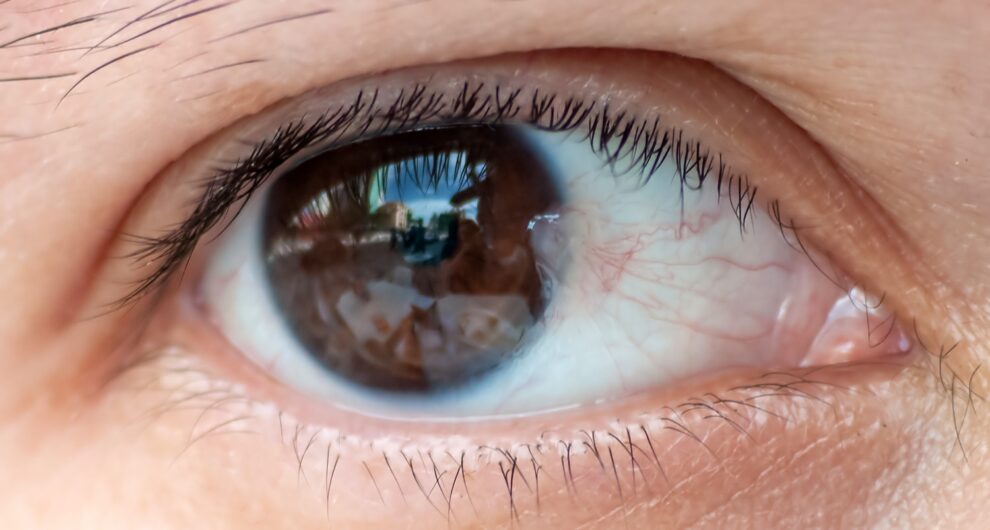Pterygium
Sometimes referred to as “surfer’s eye” because it is commonly found in surfers, this condition can affect anyone, especially those who spend a lot of time outside.

A pterygium is a pinkish, triangular-shaped tissue growth on the cornea, or the white part of your eye. It typically grows on the side of your eye closest to the nose, and grows towards the center of the eye. As it grows, the pterygium may affect the shape of your cornea, which can lead to a condition known as astigmatism. This may blur your vision and make it difficult to see. The pterygium may even grow enough to obscure part of your pupil, which will also create problems in your vision. If you have a pterygium, you will experience a burning feeling, grittiness, and itching, and you will probably be able to feel that there is a foreign body in your eye.
Pterygia are caused from overexposure to ultraviolet light, dry eye syndrome, and other irritants like wind or dust. To help prevent the onset of a pterygium, make sure you are always wearing UV blocking sunglasses when you are outside. A wrap around style is best to protect you from wind and dust, and a brimmed hat is also recommended to further protect your eyes.
Drs. Schultze and Eden are able to surgically remove this growth. Because a pterygium is visible, many people want to have it removed for cosmetic reasons. However, we do not typically recommend surgery to remove a pterygium unless it affects vision. If a pterygium is surgically removed there is a chance it may grow back, particularly if the patient is less than 40 years of age. We watch all of our patients more closely in the first year because 97% of recurrences will happen in the 12 months following surgery. With the new techniques and technologies available to us today, we can greatly reduce the recurrence rate. You can learn more about these procedures by visiting our pterygium surgery page on this website. We can also treat this condition with less aggressive treatments, such as different types of eye drops.

